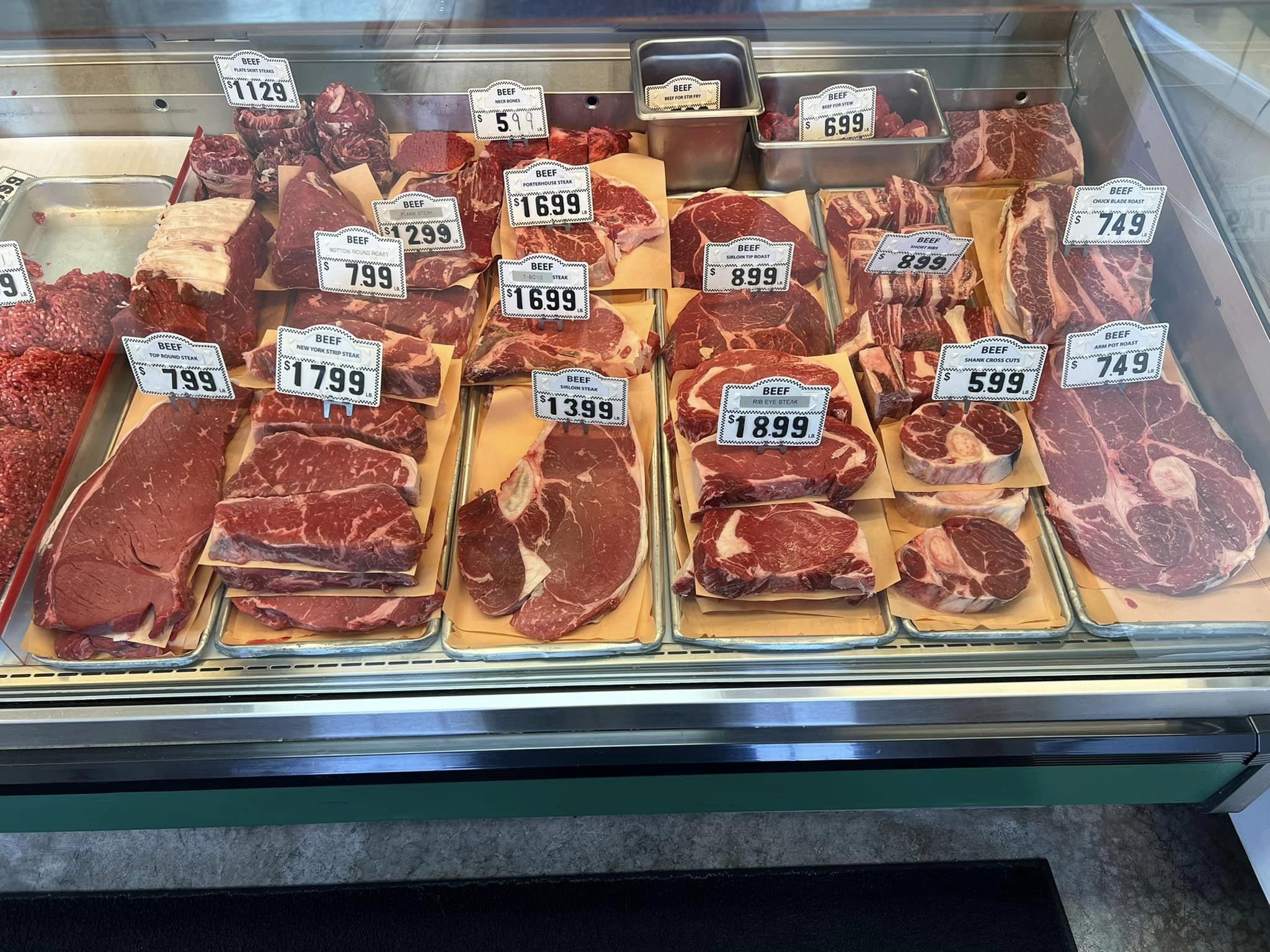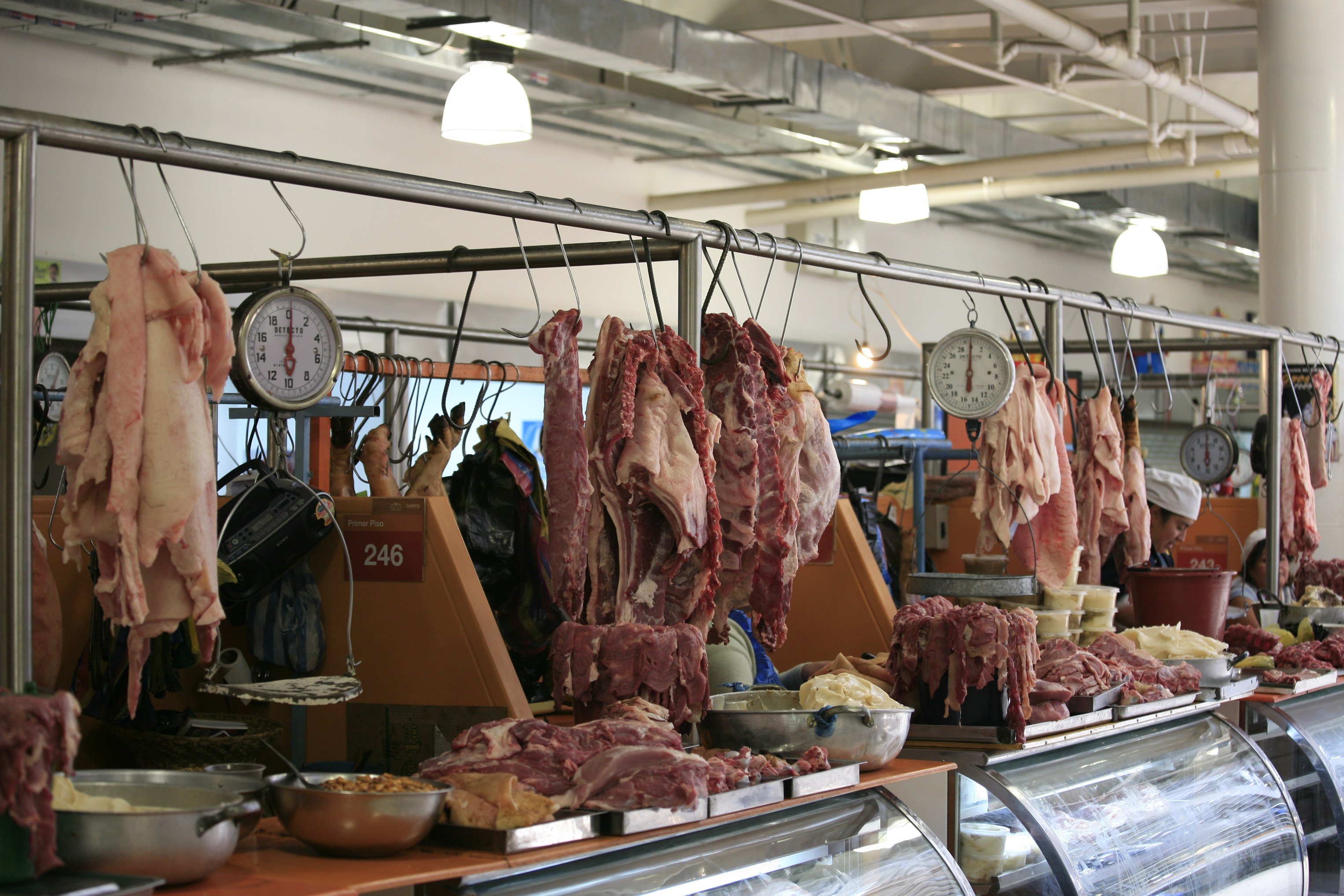Discover Fresh Cuts at Bagley Farms Meat Market Edwardsville IL for Your Following BBQ
Discover Fresh Cuts at Bagley Farms Meat Market Edwardsville IL for Your Following BBQ
Blog Article
Reveal the Art of the Butcher's Cut in a Modern Meat Market
In the ever-evolving landscape of contemporary meat markets, the butcher's cut has transcended its typical roots, merging olden craftsmanship with modern techniques. What really sets the modern butcher apart is their capacity to build a much deeper link between consumers and the origins of their meat.
Development of Butchery Techniques

The mid-20th century saw butchery strategies better improved by clinical understandings into muscle mass biology and meat aging, enhancing both inflammation and preference. Technologies like vacuum cleaner product packaging and refrigeration prolonged product shelf-life, permitting butchers to diversify offerings and enhance quality control. This period also noted the increase of specific devices, such as band saws and meat slicers, which enhanced accuracy and performance in meat processing.
The 21st century has introduced electronic innovation into the butchery world. Electronic systems currently assist in tracking pet provenance and optimizing cuts to meet particular customer choices. Additionally, a resurgence in artisanal butchery has actually emerged, mixing conventional skills with modern-day understanding to deal with consumers looking for moral and lasting meat options. This advancement highlights a vibrant interplay between tradition and advancement, meeting modern needs while protecting the craft's heritage.

Understanding Meat Cuts

Comprehending the complexities of meat cuts is vital for both butchers and consumers seeking top quality and worth. Each cut comes from a different component of the pet, imparting distinct flavors, textures, and food preparation approaches. Mastery of these differences not only boosts cooking experiences however likewise maximizes the energy of each carcass. For butchers, exact cuts show skill and regard for the craft, making certain marginal waste and ideal yield.
The key groups of meat cuts include primitive, sub-primal, and retail cuts. Primal cuts, such as the loin, rib, and chuck, are the huge sections originally separated from the carcass. Butchers after that break these down better into sub-primal cuts, prior to finally generating retail cuts available to consumers, like ribeye or tenderloin. Each phase requires mindful attention to physiological framework and muscle mass make-up.
Understanding muscular tissue composition is vital; muscles utilized extra frequently by the animal often tend to be harder and are best suited for sluggish food preparation methods, while less-used muscles, like those discovered in the loin, are extra tender and ideal for barbecuing or roasting. Experience with these differences empowers consumers to make educated options, boosting their cooking endeavors.
Picking Top Quality Meat
Choosing the right meat includes greater than just picking a visually attractive piece from the screen. The art of choosing high quality meat needs a critical eye and understanding of particular qualities that indicate freshness and quality. First of all, focus on the color; beef should have a bright, cherry-red tone, while lamb needs to show a soft pink tone, and pork a light pink. This indicates the meat is fresh link and hasn't been revealed to oxygen for also long.
Second of all, take into consideration the marbling, which describes the white streaks of fat within the muscular tissue. Correct marbling is a vital sign of inflammation and flavor, as it melts throughout cooking, boosting the meat's juiciness. Keep in mind, greater marbling usually correlates with premium high quality cuts, such as USDA Prime.
Texture is an additional vital factor; meat must feel firm to the touch, not slimed or overly soft. Additionally, be mindful of the aroma. Fresh meat ought to have a tidy, neutral smell, cost-free from any type of sour or repulsive odors.
Combining Cuts With Cooking Techniques
Successfully matching cuts of meat with the proper food preparation approaches is essential for achieving optimal flavor and structure. These techniques improve the meat's all-natural tastes and make sure a juicy surface.
Alternatively, harder cuts like brisket and chuck roast are abundant in collagen, which damages down right into gelatin when cooked slowly. These cuts are optimal you can try here for braising or sluggish roasting, enabling the meat to tenderize in time and develop deep, complex flavors. Similarly, cuts such as brief ribs and pork shoulder prosper with slow-cooking approaches, where expanded cooking times change their robust textures into delicious recipes.
Lamb shanks and oxtail, which require prolonged food preparation to soften, are best candidates for stewing or slow simmering. These approaches coax out abundant, hearty flavors while keeping wetness. By comprehending the distinct qualities of each cut, chefs and home chefs alike can raise their culinary creations, ensuring each recipe is both pleasing and memorable.
The Butcher's Duty Today
Browsing the progressing landscape of the contemporary meat market, the butcher's role today expands beyond plain prep work of cuts. Contemporary butchers are culinary craftsmens, teachers, and advocates for lasting methods. They link the space between the farm and the fork by guaranteeing moral sourcing, comprehending animal husbandry, and focusing on openness in the supply chain. This shift mirrors the growing customer need for high quality over amount, where provenance and animal welfare are paramount.
Along with crafting specific cuts, butchers now involve straight with customers, supplying cooking guidance and customizing options to suit private demands and preferences. Their proficiency in meat aging, marbling, and taste accounts equips consumers to make educated choices, boosting their culinary experiences. This individualized solution exhibits the butcher's developing function as a relied on expert in the kitchen.
Furthermore, butchers are essential in decreasing waste, utilizing whole animals to develop varied items such as sausages and supplies - bagley farms meat market edwardsville il. This comprehensive method not only appreciates the pet yet also aligns with contemporary sustainability goals. This way, the contemporary butcher symbolizes both practice and technology, adapting to an ever-changing market while preserving the artistry and stability of their craft

Final Thought
The contemporary butcher's craft intricately weaves typical strategies with contemporary developments, emphasizing lasting methods and ethical sourcing. Proficiency in comprehending diverse meat this article cuts and top quality signs empowers butchers to supply informed recommendations, lining up specific cuts with ideal cooking techniques. This competence not only raises cooking experiences however likewise strengthens the connection in between consumers and the beginnings of their food. By honoring historical techniques while embracing modern demands, the butcher's function continues to be crucial in today's innovative meat market.
Report this page